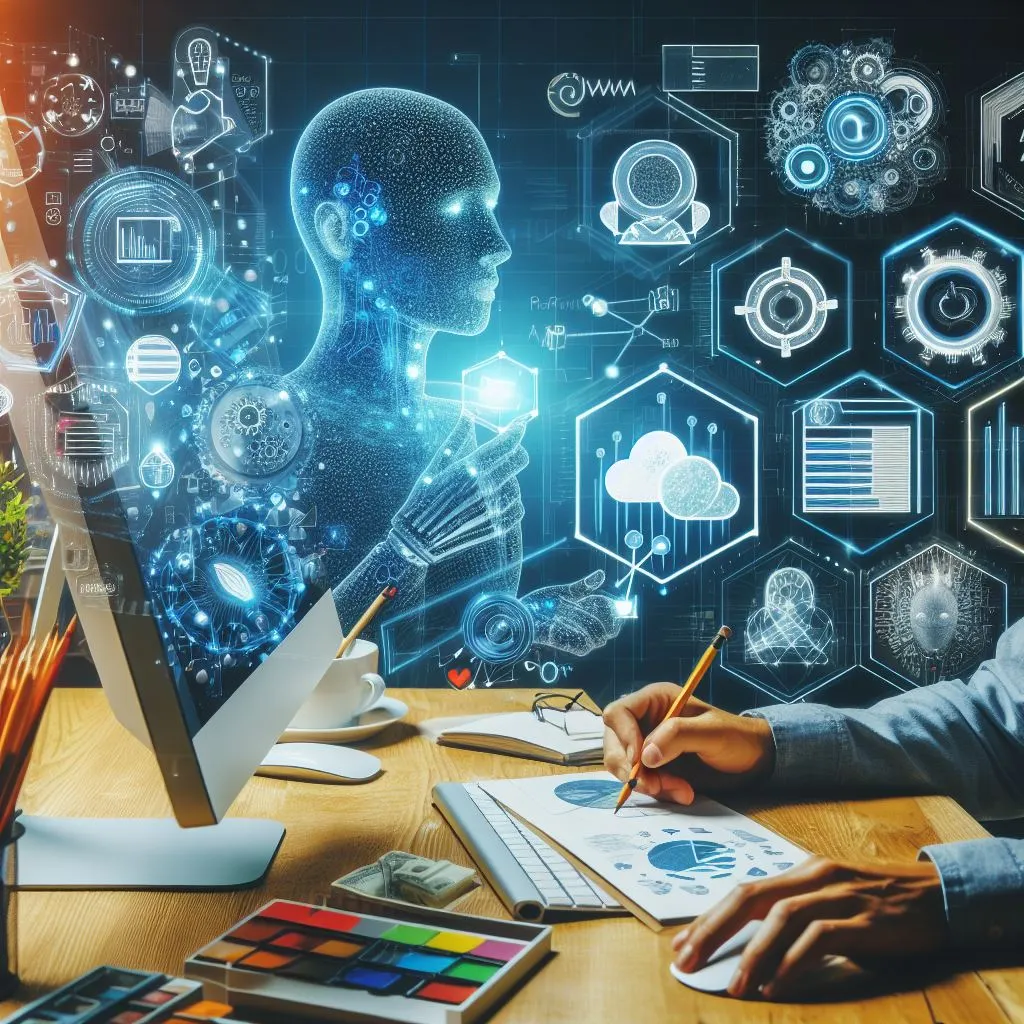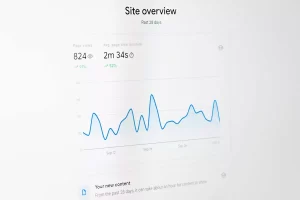Artificial intelligence (AI) has become an essential tool across various domains, including web design. With its impressive ability to process data and learn from it, AI is transforming how websites are created, optimized, and maintained. The collaboration between humans and algorithms in web design not only enhances efficiency but also raises the aesthetic and functional standards of websites. This article explores how AI influences web design and the benefits of the collaboration between designers and algorithms to achieve optimal performance.
The Role of Artificial Intelligence in Web Design
- Automating Repetitive Tasks: One of the primary advantages of using AI in web design is the automation of repetitive tasks. Algorithms can handle tasks such as code generation, layout adjustments, and image optimization, freeing designers from these time-consuming activities. For instance, AI-powered design platforms like Wix ADI and The Grid use algorithms to create personalized websites based on user inputs, saving time and effort.
- Personalized and Adaptive Design: AI enables the creation of personalized designs that adapt to users’ needs and preferences. Algorithms analyze user behavior and demographic data to adjust the layout, color palette, and typography in real-time. This level of personalization enhances the user experience, increasing conversion rates and customer loyalty. For example, AI can tailor the content of an e-commerce site to display relevant products based on the user’s browsing history.
- Performance Optimization: AI algorithms are essential for optimizing website performance. They can analyze and identify performance issues, such as slow load times or navigation errors, and suggest solutions to fix them. Additionally, AI can continuously optimize SEO by analyzing and adjusting content to align with the latest trends and search engine requirements. This is crucial for ensuring optimal visibility and attracting more traffic to the site.
Collaboration Between Humans and Algorithms
- Amplified Creativity: While AI can automate many aspects of web design, human creativity remains a central element. Human designers bring vision, emotion, and innovation—elements that algorithms cannot fully replicate. The collaboration between humans and AI allows designers to focus on the creative and conceptual aspects, while AI handles the technical execution and ongoing optimization.
- Continuous Feedback and Learning: Another important aspect of the collaboration between humans and algorithms is continuous feedback. Human designers can provide feedback and adjustments based on the data analysis provided by AI. This continuous feedback loop and learning ensure constant improvements in the design and functionality of the website. Additionally, AI can learn from these adjustments, becoming more efficient and accurate over time.
- Enhanced User Experience: AI and human designers collaborate to create user experiences that are not only functional but also visually pleasing. Algorithms can analyze user behavior to identify patterns and preferences, and designers can use this information to create intuitive and attractive interfaces. For example, AI can suggest design changes based on A/B testing and user data analysis, and designers can implement these suggestions to improve the user experience.
Benefits of Human-AI Collaboration
- Increased Efficiency: The collaboration between humans and AI leads to increased efficiency in the web design process. AI algorithms can automate complex and time-consuming tasks, allowing designers to focus on the more creative aspects of the project. This not only speeds up the development process but also reduces the costs associated with designing and maintaining websites.
- Improved Quality: AI contributes to improving the quality of designs through continuous analysis and performance optimization. Algorithms can detect and correct errors, ensuring that the site operates at peak capacity. Additionally, AI can adjust the design to align with current best practices and standards, ensuring that the site is always modern and efficient.
- Personalization and Relevance: Another major benefit of using AI in web design is the ability to personalize content and design for each user. Algorithms can analyze user behavior and preferences to deliver personalized and relevant experiences. This level of personalization not only enhances the user experience but also increases conversion rates and customer loyalty.
Artificial intelligence has revolutionized the field of web design, providing powerful tools for automation, personalization, and optimization. The collaboration between humans and algorithms is essential for achieving optimal performance, combining human creativity and innovation with the efficiency and precision of AI algorithms. By embracing this collaboration, designers can create websites that are not only visually appealing but also function flawlessly, offering users an unparalleled experience. In an ever-evolving digital world, integrating AI into web design is not just an option but a necessity to remain competitive and relevant.
Learn about How Advertorials Can Improve SEO Strategies and Drive Increased Traffic
Follow us on social media:
Instagram: https://www.instagram.com/securemenow/
Facebook: https://www.facebook.com/securmenow
We offer SEO and Web Design services. Contact us







